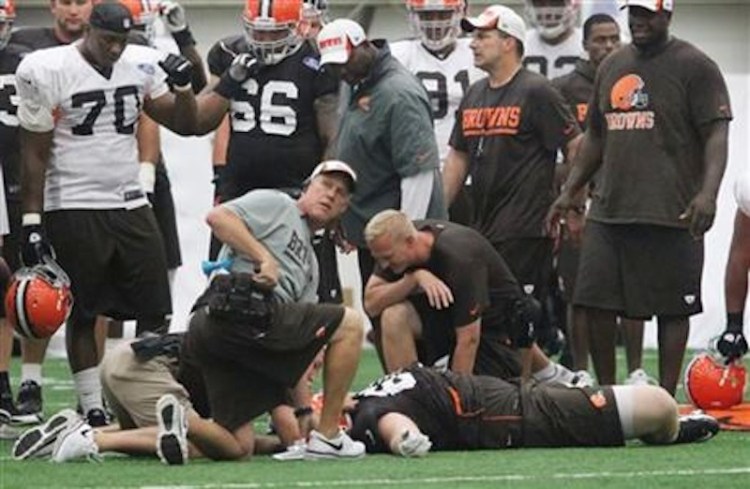Justin Strzelczyk was a terrific football player. He was also, for all the wrong reasons, a pioneer.
At the University of Maine in the late 1980s, Strzelczyk was an All-American defensive lineman who helped lead the Black Bears to two conference titles. He was subsequently drafted by Pittsburgh, and over nine seasons in the NFL, he played in 133 games for the Steelers as an offensive lineman, starting 75.
It was announced last week that Strzelczyk will be inducted into the University of Maine Sports Hall of Fame this fall.
Strzelczyk’s career ended the way they usually do in the high-stakes, injury-riddled NFL – after missing a season with an injury, he incurred another one, and he was released.
And when Strzelczyk died in 2004 after driving at 100 miles per hour into the path of an oncoming tanker truck, the ensuing stories failed to make sense of a man who apparently was finding it hard to live a life without football, and who perhaps was struggling with alcoholism and mental illness.
Even then, the NFL knew there was likely something more.
At the time of Strzelczyk’s death, the league was working hard to cover up the mounting evidence linking head injuries sustained during play to the development of irreversible brain damage.
The next year, however, Dr. Bennet Omalu published the findings of his examination of the brain tissue of Mike Webster, an NFL hall of famer who ended his life homeless and broke, refusing help from his beloved former teammates.
Omalu discovered blotches usually found in older patients with dementia. He called the condition “chronic traumatic encephalopathy,” or CTE.
Subsequent research has shown that CTE, which can only be diagnosed easily post-mortem, is caused by repeated head injuries, not only those strong enough to cause a concussion but smaller collisions as well – like those experienced by an NFL lineman dozens of times each game.
Omalu subsequently tested brain tissue from two other former NFL players who also died early, both from suicide. Both showed signs of CTE.
In 2007, three years after the crash that ended his life, Strzelczyk became Omalu’s fourth test subject. The scan showed four red splotches on his brain; it was CTE.
Worse, the previous three subjects had been between age 44 and 50. This was a 36-year-old – there was no pawning the damage off on some other, non-football-related cause.
In the ensuing years, as the evidence connecting football to long-term brain damage became clear, so too did the NFL cover-up. The NFL was pressured to change its rules to better recognize the threat of brain injuries, and to agree to pay settlements to former players who suffered because the league hid the dangers of concussions.
Still, the NFL continues to be secretive regarding its history with concussion treatment, and slow to compensate players owed settlement money. Concussions are still a regular occurrence, and the league does not always follow its own protocol for treating them.
But the public won’t be blind to it anymore. The threat of brain injury is part of every conversation on the sport, from the NFL down to high school and youth football.
We at least now have an explanation that was lacking back in Strzelczyk’s final years, when the once fun-loving, friend-making mountain of a man began acting bizarrely.
He shouldn’t have had to suffer like that, unaware of what was happening in his head. Let’s hope that because he did, others won’t have to.
That would be quite a legacy, even for a hall of famer.
Send questions/comments to the editors.


